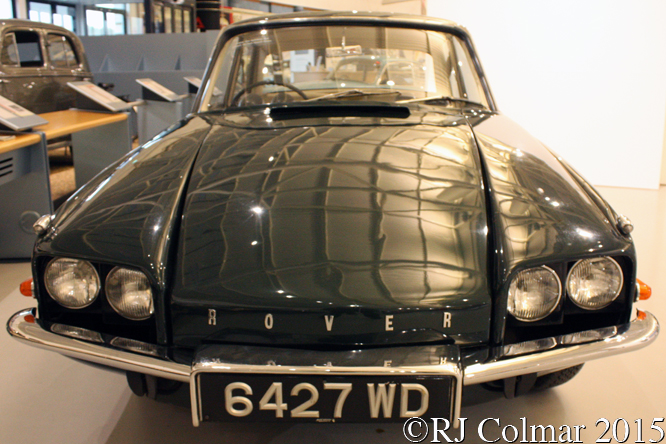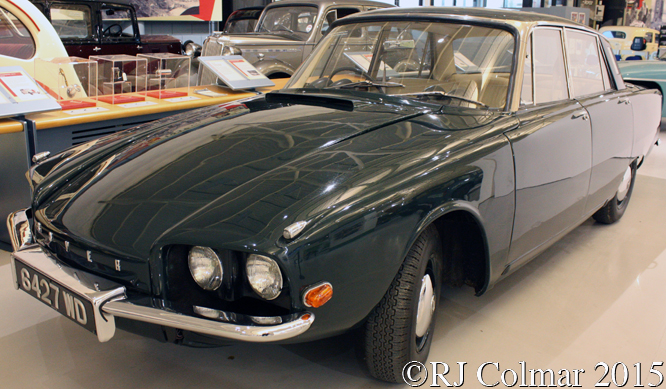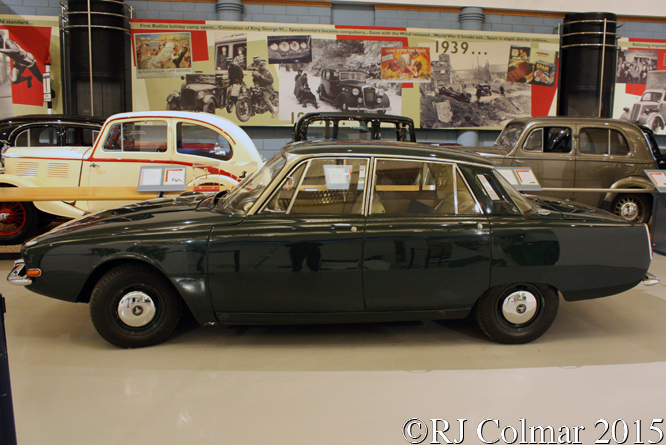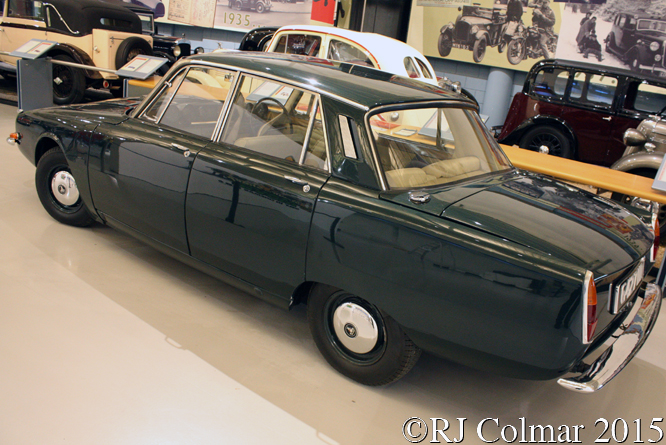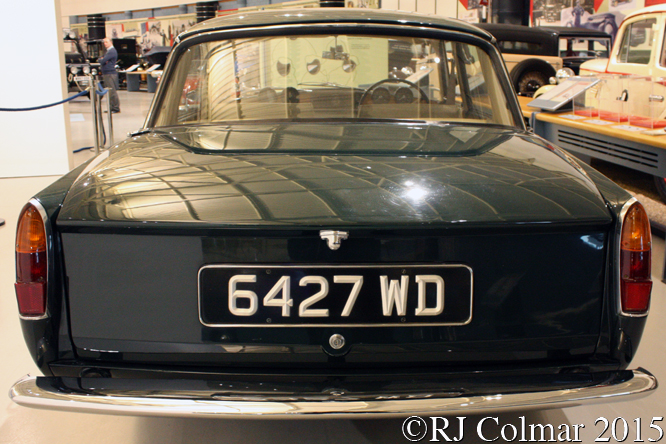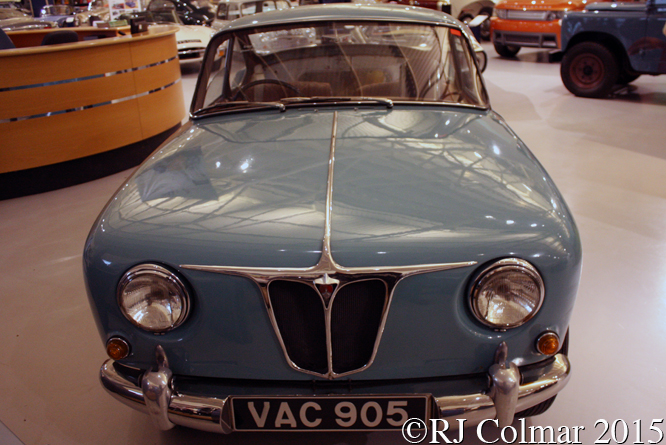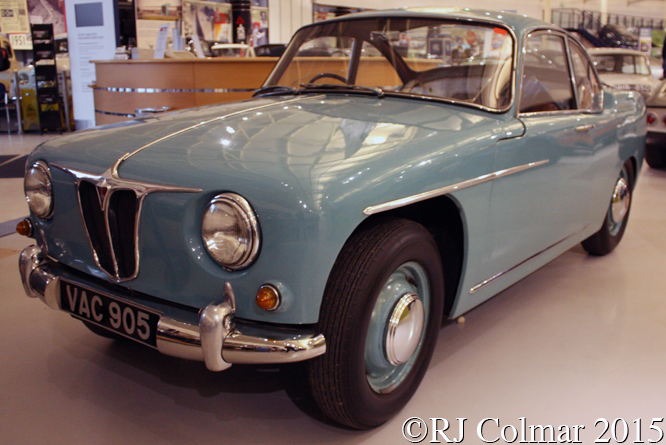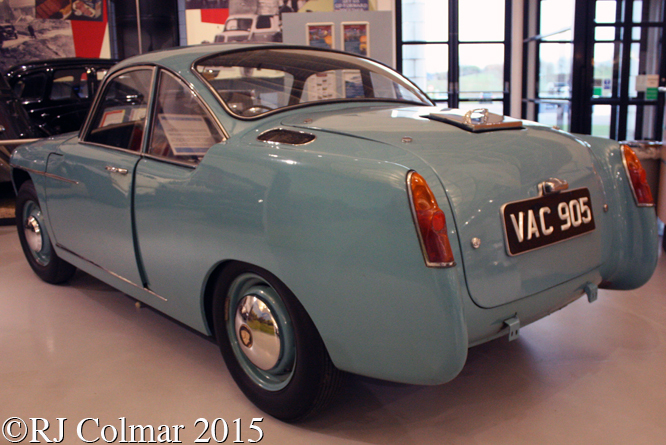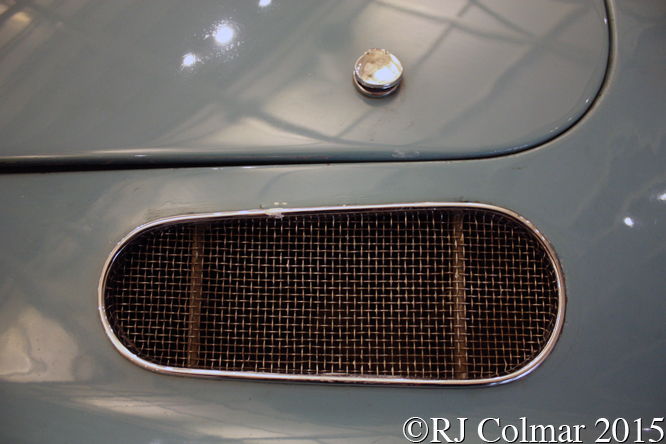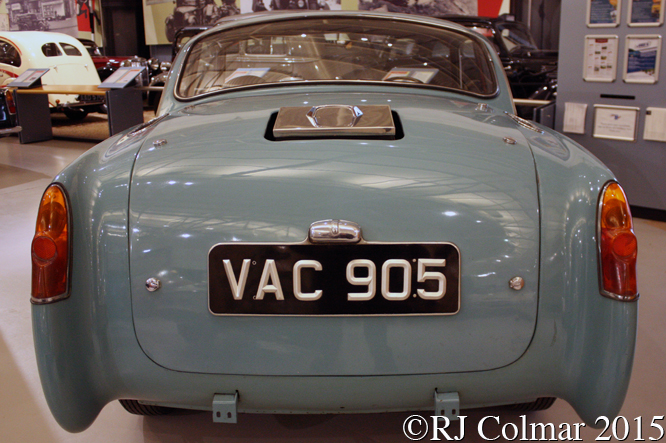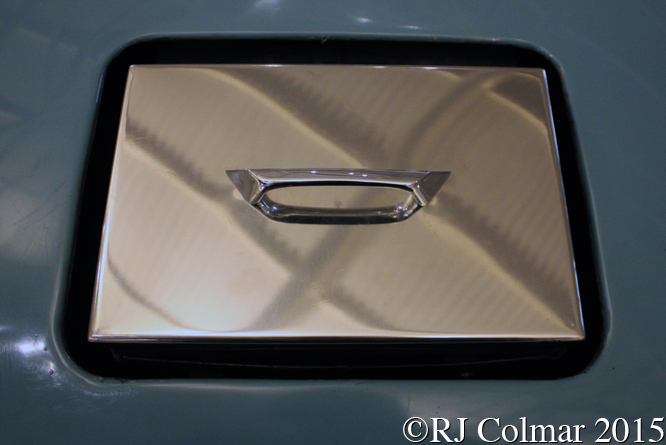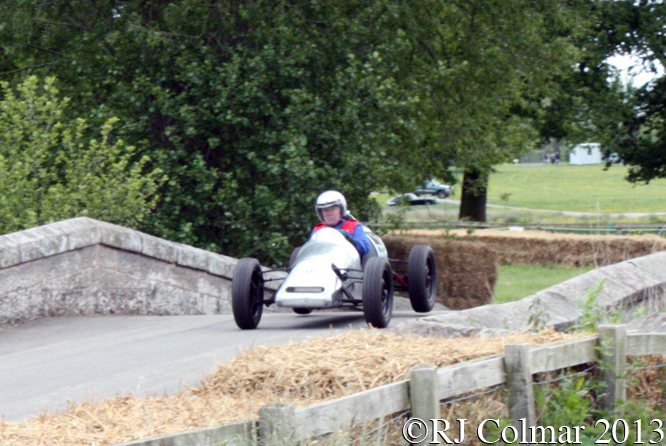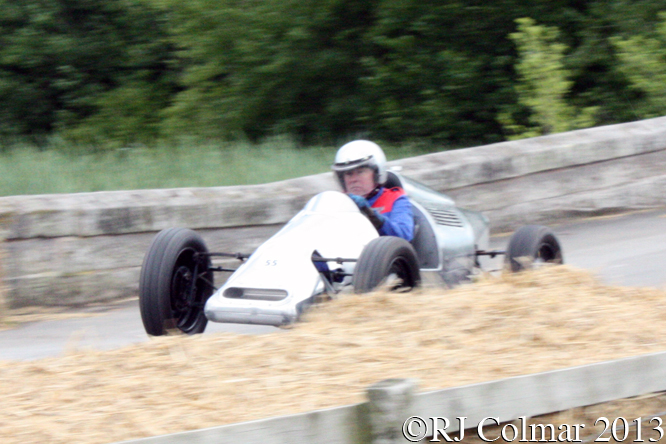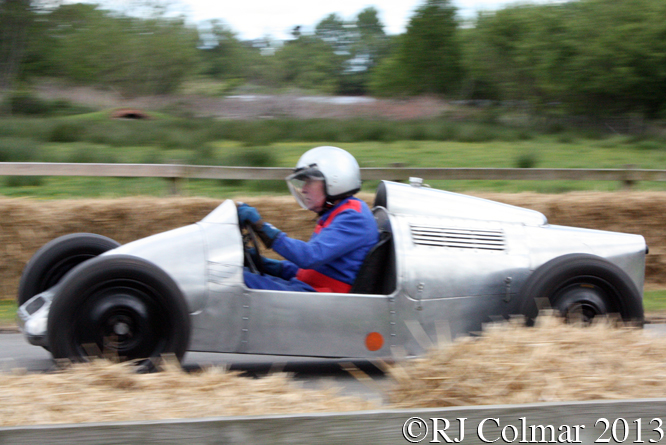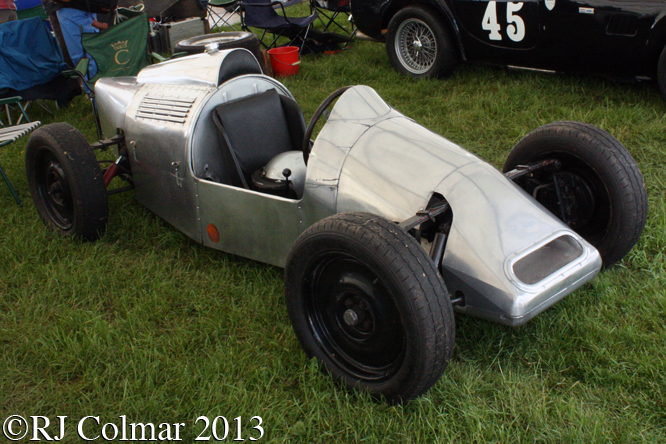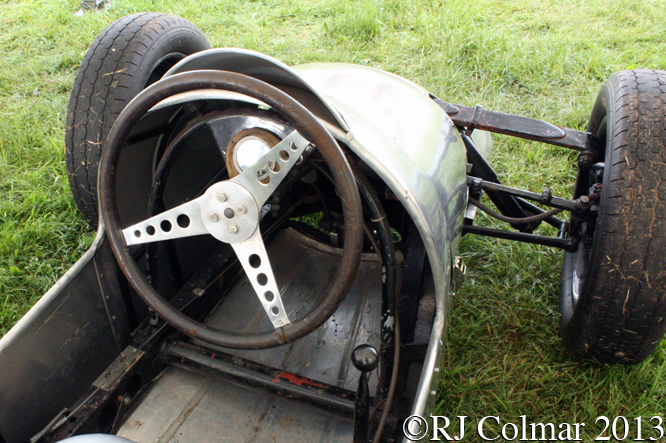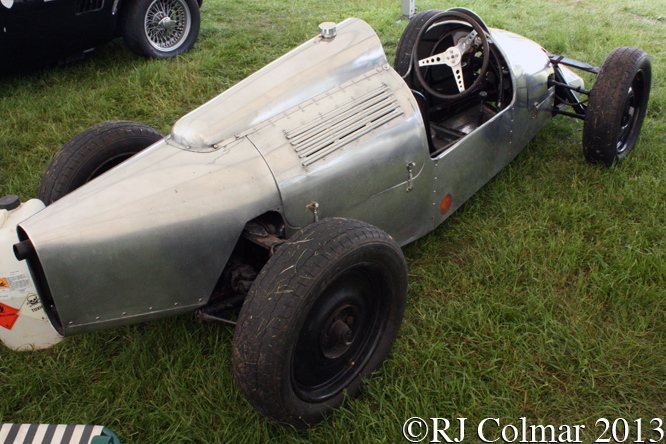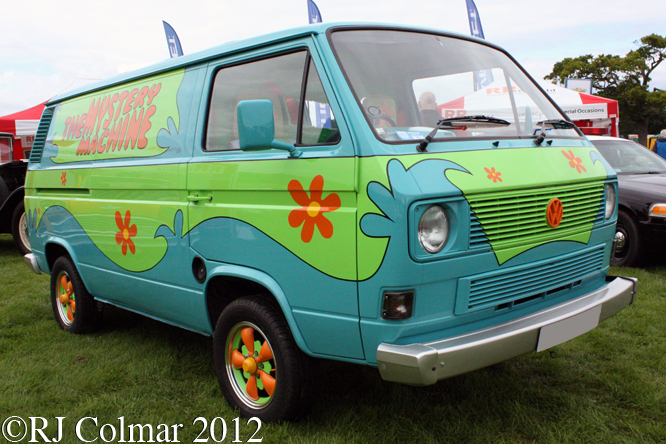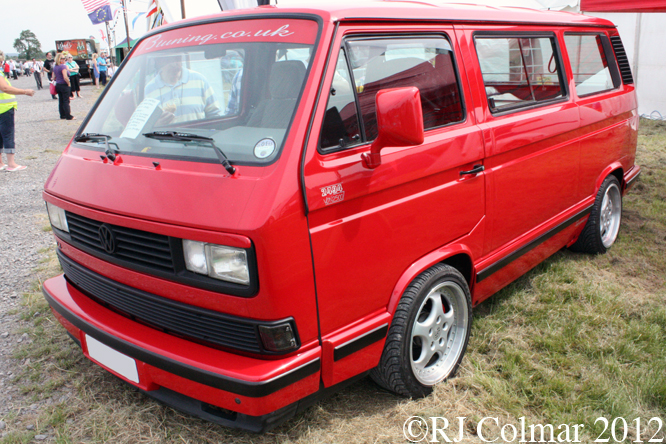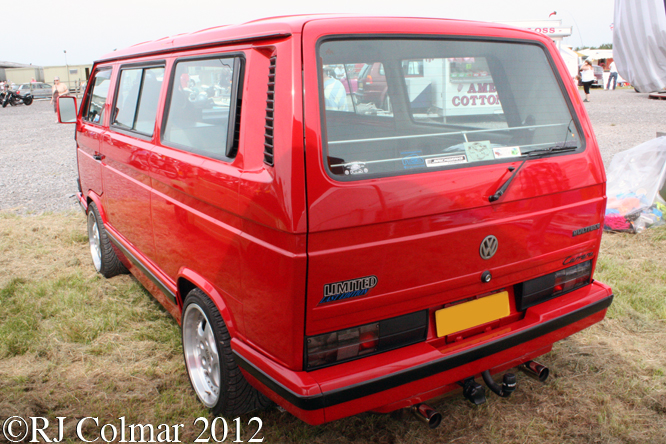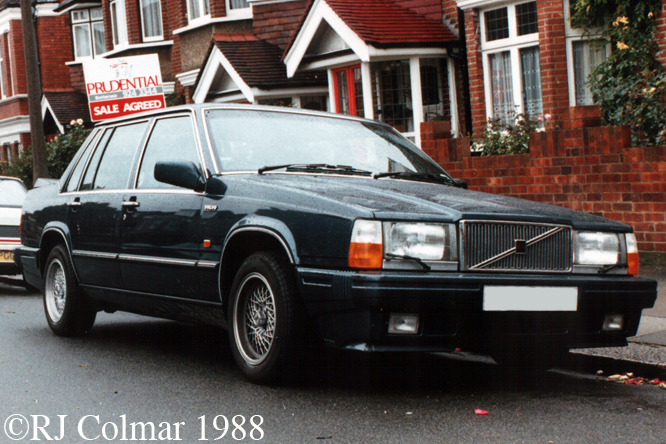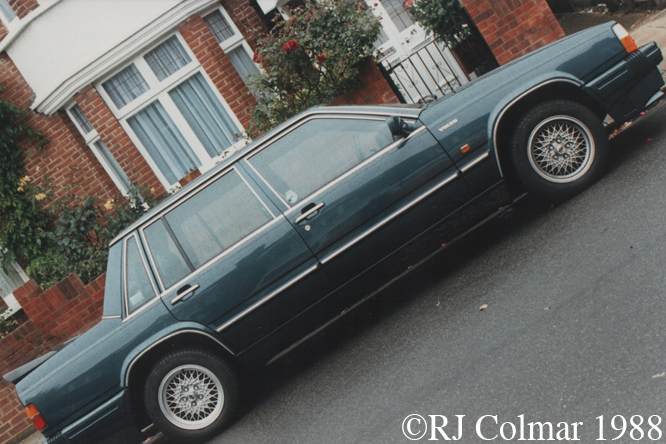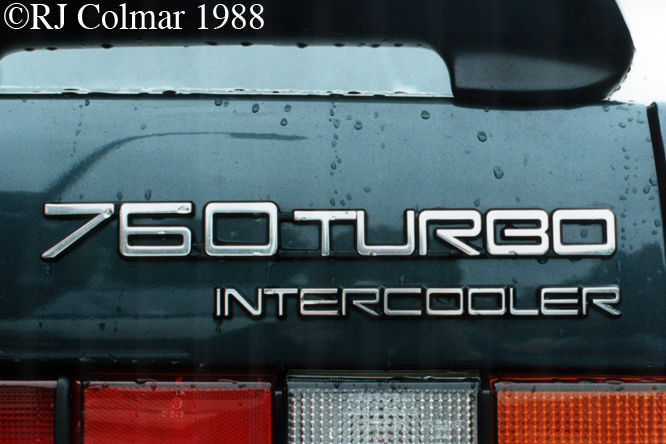The second generation Mitsubishi Pajero / Montero was built between 1991 and 1999, today’s featured 1996 T3 Prototype was built to compete in the Granada Dakar Desert Rally and aside from the name and a few components shares little in common with it’s commercial namesake.
Going into the 1996 Granada Dakar Rally Mitsubishi were looking to win their 4th Dakar Rally 4 wheel title outright, their first since 1993, as were ’91, ’94 and ’95 winners Citroen.
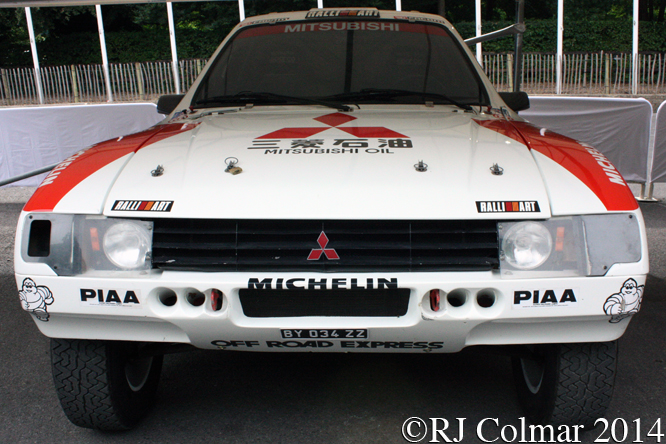
The T3 Prototype was built on a space frame competition chassis featuring double wishbone and coil spring suspension all round, the tad over 2m / 6’6″ wide, with a 3m wheel base chassis was covered with a 4m carbon fibre and Kevlar body.
Weighing only 1410 kgs / 3100 lbs the vehicle was powered by a 2.4 litre / 147 cui 4 cylinder 16 valve 4G64 motor fitted with an inter cooled Turbocharger and a new for ’96 mandated 34mm air restrictor that kept the power output down to a claimed 300hp.
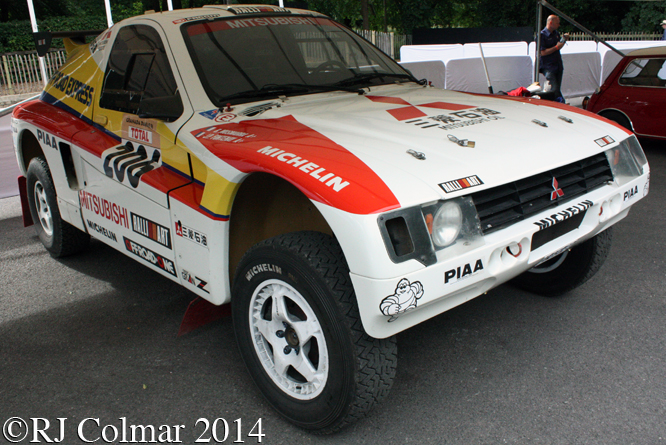
Thee T3 Prototypes were entered for crews; Bruno Saby/Dominique Serieys who won in 1993, Kenjiro Shinozuka/Henri Magne and Jean-Pierre Fontenay/Bruno Musmarr.
A fourth T3 Prototype with RVR Space Runner bodywork was entered for Hiroshi Masuoka / Andreas Schulz and the whole team was backed up with 9 trucks and 76 personnel led by Ullrich Bremer who were also mandated by the regulations to compete.
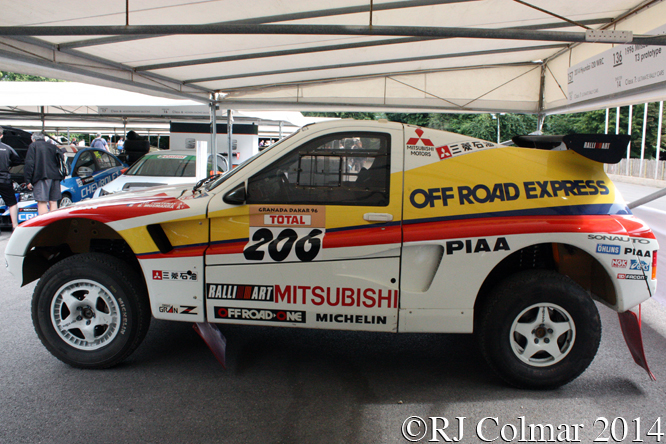
Pierre Lartigue and Michel Perin completed a hat trick of wins in their Citroën ZX Rallye Raid Evo 5, a car which traces it’s origins back to the Peugeot 205 T16, while Jean-Pierre Fontenay and Bruno Musmarr came home in 3rd, driving today’s featured #206 seen at Goodwood Festival of Speed, ahead of the sister car of Bruno Saby and Dominique Serieys which finished 7th and 17th place Kenjiro Shinozuka and Henri Magne.
Kenjiro and Henri went on to win the event in 1997, Jean-Pierre with Giles Picard won in ’98, Hiroshi and Andreas won in 2003 the year after Hiroshi won the event for the first time with Pascal Maimon, all of these victories counting towards the 12 Dakar overall 4 wheel victories Mitsubishi have won to date.
Thanks for joining me on this “34mm Turbo Restrictor” edition of “Gettin’ a li’l psycho on tyres” I hope you will join me again tomorrow for Mercedes Monday. Don’t forget to come back now !


